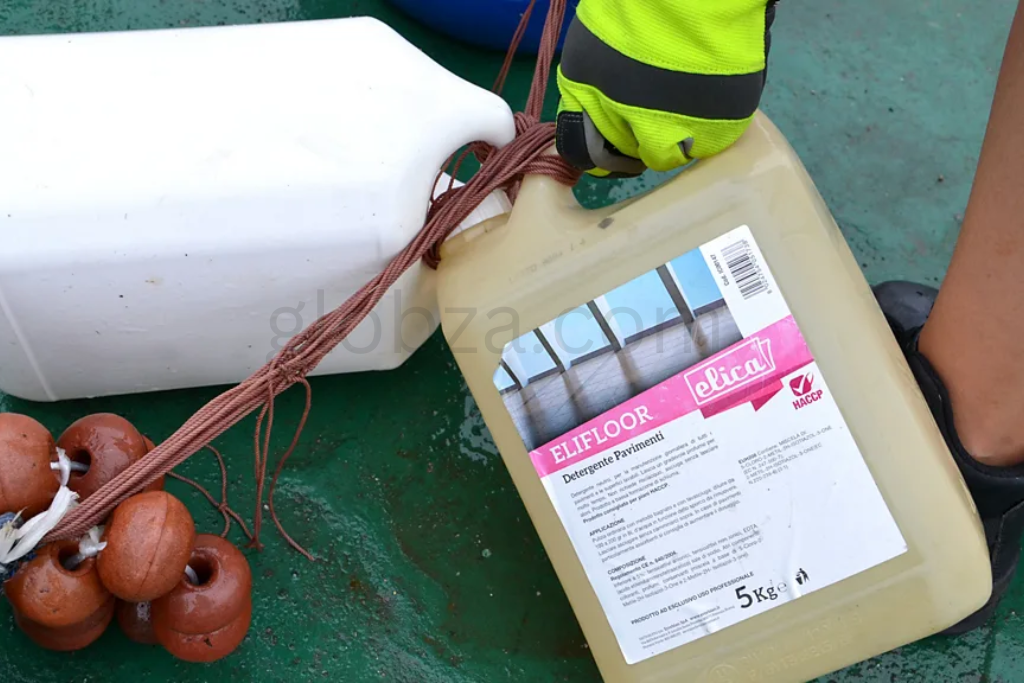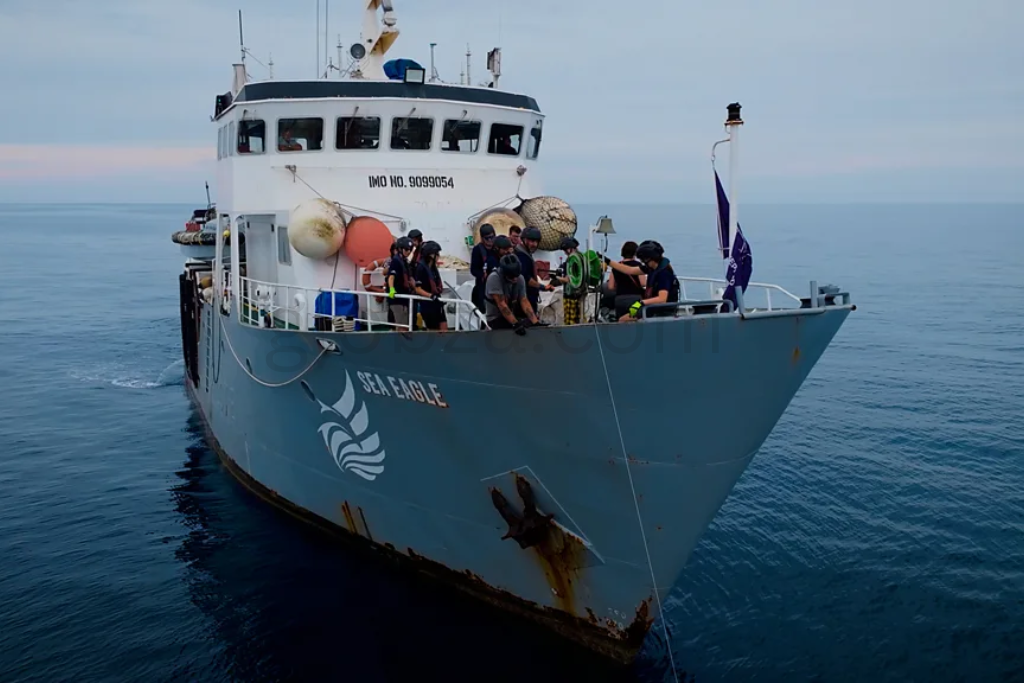1. Illegal Fish Traps in Italy’s Mediterranean: A Threat Hidden Beneath the Waves
Beneath the serene surface of Italy’s Mediterranean coastline lies a silent, invisible menace—illegal fish traps. Fishermen and illegal operators scatter these clandestine devices—often made of barbed wire, nets, and sharp hooks—across the seabed, turning it into an invisible minefield. For decades, this hidden network has disrupted marine biodiversity, endangered diving expeditions, and fueled black-market economies in the fishing industry. The problem has escalated so dramatically that seasoned divers compare these zones to war zones, describing the seascape as “a battlefield of wires, death traps, and illegal ambition.”
Illegal fishers heavily concentrate these traps around hotspots like the Aeolian Islands, Calabria, and parts of Sicily, prompting coast guards to pull hundreds of these devices from the sea every year. While traditional fishing practices in these regions date back centuries, the aggressive overfishing by illegal operators threatens to obliterate marine populations like groupers, sea bream, and bluefin tuna—already teetering on the brink due to climate change and commercial exploitation.
Environmentalists argue that these traps are not only unethical but ecologically catastrophic. According to WWF Italy, “Each illegal trap isn’t just a threat to fish; it’s a hazard to the entire ecosystem. These traps entangle turtles, dolphins, and even seabirds, often leading to injury or death. Satellite tracking and marine surveillance drones have exposed vast networks of these traps extending over kilometers, often maintained by organized crime groups that profit from the unregulated marine harvest.
“The sea is like a minefield. You never know when you’ll hit a line, snap a propeller, or lose a diver,” warns Marco Colombo, a marine conservationist working in Southern Italy.
The unregulated nature of these operations makes enforcement extremely difficult. Italian Coast Guard officers conduct surprise raids, but the perpetrators often return within days. Despite international conventions and EU fisheries legislation, the problem persists, exacerbated by bureaucratic loopholes and limited patrol resources. The challenge lies not just in removing the traps but in dismantling the systems—social, economic, and criminal—that enable their continued use.

2. The Environmental Fallout: How Illegal Fish Traps Are Destroying Marine Biodiversity
Illegal fish traps in Italy’s Mediterranean are having a profound and irreversible impact on marine biodiversity. What begins as an attempt to harvest fish outside legal quotas quickly spirals into an ecological disaster. These traps often target high-value species, but their indiscriminate design captures everything from endangered sea turtles to juvenile fish that are crucial for replenishing stocks.
The traps’ designs are particularly cruel. Most consist of longline nets with barbed hooks or cages baited to attract unsuspecting marine animals. Once inside, escape is nearly impossible. Dead or injured animals become bait themselves, creating a grim cycle of death. Marine biologist Dr. Alessia Romano describes it as “an underwater ghost town. The traps kill more than they capture, and the damage they cause often goes unseen until it’s too late.”
A study conducted by the University of Naples found that illegal traps contributed to a 30% decline in grouper and snapper populations in monitored zones. Even more alarming, illegal traps kill non-targeted species—like octopuses and cuttlefish—at similar rates through entanglement and stress.
Aside from the direct loss of life, these traps cause mechanical damage to delicate ecosystems like seagrass meadows and coral reefs, which serve as essential breeding and feeding grounds. Each trap deployment displaces sand, crushes flora, and introduces synthetic materials into otherwise pristine environments. In turn, this affects the overall food chain, from microscopic plankton to apex predators.
“Every time we remove one of these traps, it’s like unburying a piece of the ocean’s soul,” says Luca Brandi, a volunteer with Oceanus Italia. “But for every one we find, ten more are set.”
The long-term implications are deeply concerning. As fish populations decline, illegal competition drives law-abiding artisanal fishers—who rely on the sea for sustenance—out of business. This shifts economic pressure to already-deprived coastal communities, many of which are witnessing an increase in youth migration and unemployment.
Illegal traps inflict an incalculable cost—not just by wiping out marine life, but by collapsing entire marine systems.
3. Who’s Behind the Web: Organized Crime and the Illegal Fishing Economy
The proliferation of illegal fish traps in Italy’s Mediterranean is not merely a tale of rogue fishermen—it is deeply entwined with organized crime syndicates. From the Camorra in Naples to the ‘Ndrangheta in Calabria, criminal networks have turned the sea into a lucrative black market, exploiting fisheries regulations and environmental blind spots.
These groups deploy fleets of unregistered vessels equipped with GPS jammers, night-vision gear, and sonar systems to set and retrieve traps undetected. The fish caught are sold to underground markets or even funneled into the legitimate food supply through corrupt intermediaries. Restaurants and wholesalers who buy this fish often turn a blind eye, lured by cheaper prices and higher profits.
“You’re not just buying a plate of fish—you’re feeding a criminal economy,” states journalist Fabrizio Gatti, who investigated seafood smuggling rings in southern Italy.
There are also disturbing reports of human trafficking and forced labor tied to this illegal industry. Migrants and impoverished locals are recruited to do the dangerous work of setting traps, navigating unlit waters, and avoiding patrol boats—all for a pittance. They face harsh conditions and often receive threats if they try to leave.
Despite a 2019 EU directive aimed at curbing illegal fishing, enforcement remains toothless. Legal loopholes, lack of transparency in seafood supply chains, and minimal funding for marine patrols have allowed these networks to flourish. Investigations into illicit fisheries often go cold due to corruption or fear of retaliation.
The challenge is immense. Law enforcement needs technological upgrades, international coordination, and robust whistleblower protections. Until then, organized crime will continue to profit from the slow death of the Mediterranean’s ecological and economic vitality.
4. Voices from the Sea: Fishermen, Divers, and Conservationists Speak Out
To truly understand the depth of this crisis, one must listen to those who live and work on the front lines. From veteran fishermen in Liguria to conservation divers off Sicily, the stories are harrowing, heartfelt, and increasingly desperate.
Antonio Rizzo, a third-generation fisherman from Salerno, laments, “We respect the quotas. We fish by the book. But we go out now and bring back nets half-empty while the criminals get rich.” His boat once caught over 100kg of sea bream per week. Now, he barely fills 30kg.
Divers recount terrifying encounters with submerged traps that snag their oxygen lines or trap them unexpectedly. “You don’t see them coming. One wrong move and you’re stuck, meters underwater,” says Chiara Venturi, a dive instructor who’s had two near-death experiences because of hidden traps. Some have started carrying knives during dives, not to fight predators, but to cut themselves free.
Environmentalists, too, are sounding alarms. NGOs like MareVivo and Legambiente have organized clean-up missions, retrieving over 5,000 illegal traps in the past decade. However, each removed trap feels like a drop in a rising tide.
“We feel like janitors in a burning house,” says Enzo Marini, a marine biologist who volunteers on illegal trap recovery missions. “We clean one area, and the fire spreads to another.”
These voices paint a stark picture—one not just of ecological collapse but of betrayal. Betrayal by institutions that fail to act, by markets that reward exploitation, and by a society that prizes cheap seafood over sustainability.

5. Solutions and Hope: Reclaiming the Mediterranean’s Future
Despite the overwhelming scale of the problem, hope is not lost. A coalition of European marine conservation bodies, local authorities, and civilian volunteers are banding together to push back against illegal fish traps in Italy’s Mediterranean. Their work, while slow and often dangerous, is starting to make waves.
Technological tools like AI-powered drones, satellite surveillance, and underwater detection robots are being deployed to map and neutralize illegal traps. Programs are being funded to support artisanal fishers with sustainable techniques and fair-trade seafood certifications. Education campaigns are teaching consumers to identify legally sourced seafood and reject the black-market supply.
Legal reform is also crucial. Italy is working to align more closely with EU fishing standards and impose harsher penalties for repeat offenders. Confiscation of illegal vessels, revocation of licenses, and even jail time are being considered.
“We must not only enforce the laws but restore the sea’s dignity,” says Federica Rossi, a policy advisor at the Italian Ministry of Ecological Transition.
On the cultural front, a new generation of Italian youth is rising—marine biologists, eco-tourism entrepreneurs, and digital activists using platforms like Instagram and TikTok to raise awareness. Their campaigns are beginning to change public attitudes, turning illegal fish traps from a hidden issue into a national scandal.
Grassroots programs like “Adopt-a-Reef” and citizen science initiatives are bringing more people into the fold, fostering a sense of ownership over the Mediterranean’s future. Divers now organize “trap clean-up days,” and some coastal towns have declared “marine peace zones” where any form of trapping—legal or not—is banned.
The journey is long, but momentum is building. If the sea was once a minefield, it is now a battleground for its own redemption.




